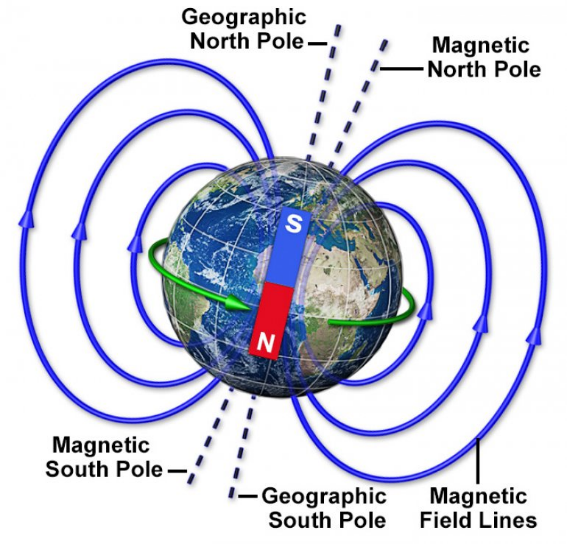Because solar panels convert sunlight into electricity, their location is important to ensure they’re working as efficiently as possible. There are a few factors to consider when locating a solar panel installation, so that you generate as much electricity as possible.
Direction and Tilt of Solar Panels
The best direction, or azimuth, to face solar panels in the U.S. is true south. By facing in this direction, solar panels can receive sunlight throughout the day. When determining the direction, it’s important to distinguish between magnetic south, which you’d determine with a compass, and true south, which is determined by longitude, the north-south lines that connect the geographical north and south poles.

Because of the difference between the south pole of the Earth’s geomagnetic field and the geographical south pole, a compass can only get you close to true south.
One exception to this south-facing rule is time-of-use (ToU) billing. Under ToU, utilities increase the cost of electricity to reduce spikes in consumption that occur at different times of the day, for example, when people return home in the evenings. If your utility has ToU billing, then, in this example, it might make sense to orient your panels to face more westerly to increase electricity generation in the afternoon to offset the increased price the utility charges.
The next consideration is the tilt or the pitch angle of your panels, which is determined by latitude—the imaginary east-west lines that band the planet. The correct pitch angle maximizes the panels’ exposure to available sunlight. The closer an installation is to the equator, the more horizontal the solar panels will be. Conversely, installations that are closer to the poles will have panels that are more vertical. In the U.S., pitch angles between 20 and 30 degrees are common.
Location
Another important consideration is the location of the solar panels on your property. There are a few options available depending on your premises:
Roof Installation

A flat roof can be an ideal location for onsite commercial solar panels as installation can be quick and easy. Other benefits include the fact that the panels can shield the roof from harmful UV radiation while making it cheaper to cool in the summer. Pitched roofs can be suitable locations as well. There are a few factors to consider:
- Does the roof face south? East- or west-facing roofs can be used.
- Is your roof free of shade from trees or adjacent structures?
- Is the roof large enough to accommodate the solar panels?
- Can the roof support an installation?
Ground Mounted Solar

If your roof isn’t a suitable location for your installation for any of the reasons listed above, then ground-mounted solar should be considered if you have the space. Considerations for ground-mounted locations include:
- Is it free from shade and obstruction?
- Is it relatively flat? Steep terrain can increase the cost of installation.
- Is it relatively dry with good drainage? Avoid floodplains and locations with standing water.
- Is it within 500 feet of your building? Installation can be completed at distances much greater than 500 feet; although, distance may increase the cost of installation.
A parking lot is another option for ground mounting. By creating a carport with structures to support panels above the parking spaces, you can transform a parking lot into an asset that generates clean energy. Employees often appreciate the shade that carport structures provide in warmer months.
Building-integrated Photovoltaics
Another possible option is building-integrated photovoltaics (BIPV), which generate electricity as part of the outer layer of a structure, often as part of a building’s architectural design. While BIPV can deliver its greatest value when included in the design and construction of a new building, existing buildings can be retrofitted with it. Applications of BIPV include:
- Facades – Semi-transparent thin-film or crystalline solar panels can replace traditional glass windows.
- Rooftops – Photovoltaic material replaces roofing material or the roof itself.
- Glazing – Ultra-thin solar cells may be used to create PV skylights or greenhouses.
Next Steps
There are many options to consider when thinking about locations for solar panel installations. We’re here to help you.
To learn if solar is the right move for your business, contact us for a free solar feasibility report.